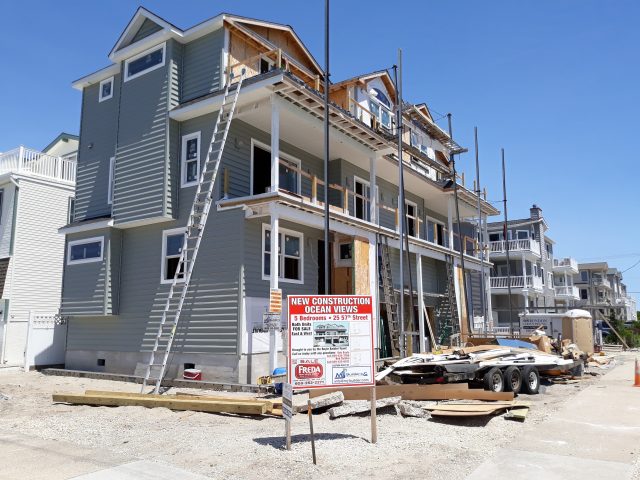By DONALD WITTKOWSKI
Sea Isle City, considered one of the leading communities in the country for flood-control measures, is strengthening its stormwater management systems to include “minor developments” such as home construction and new swimming pools.
An ordinance introduced Tuesday by City Council is designed to meet or even exceed stormwater management standards set by the New Jersey Department of Environmental Protection and the Federal Emergency Management Agency.
“The City seeks to meet, exceed, and enforce such standards in pursuit of maintaining a safe and flood-free community,” the ordinance says.
Sea Isle already has a stormwater management ordinance that includes “major developments” such as commercial projects that are built on an acre of land or more.
The ordinance is being revised to include “minor developments” that would be built on less than one acre of land, including single-family homes, duplexes and swimming pools, City Solicitor Paul Baldini said.
A public hearing and final vote on the ordinance are scheduled for the Aug. 25 Council meeting.
Under the proposal, smaller construction projects such as new homes and pools will have to comply with stormwater management measures, including erosion control, groundwater recharge and stormwater runoff.
Baldini explained that those types of projects would have to have recharge systems that capture stormwater through a series of pipes and allow it to seep through the ground naturally instead of flushing it out on the street and making flooding even worse.
“It helps the environment and retains stormwater,” Baldini said of the recharge systems.
He estimated that property owners would typically spend $2,000 to $4,000 to have recharge systems installed for their new homes or pools.

One of the benefits to Sea Isle for having stringent stormwater management standards is to maintain its high standing in the National Flood Insurance Program administered by the Federal Emergency Management Agency, or FEMA.
By revising its stormwater ordinance, the city will be in position to earn extra points as part of FEMA’s Community Rating System for the NFIP.
“The City seeks to maintain its current rating or increase its rating by the Community Rating System classification with FEMA; and the City seeks to maintain its current discount or receive a larger discount on flood insurance,” the ordinance says.
Sea Isle is among only a few cities and towns in the country to have obtained a “Class 3” community rating within the NFIP, entitling local property owners to a 35 percent discount on their flood insurance policies.
Ultimately, Sea Isle hopes to accumulate enough points to move up from “Class 3” to “Class 2” status in the ratings system, which would provide local homeowners with even steeper discounts for their flood insurance policies.
Once in danger of being thrown out of the National Flood Insurance Program in 1993, Sea Isle has undergone a dramatic transformation since then and is now ranked as one of the nation’s leading communities in flood prevention.
FEMA’s 2019 nationwide listing of cities and towns that are part of the NFIP community ratings shows that Sea Isle is the only New Jersey municipality to have achieved a “Class 3” ranking.
Over the years, Sea Isle has implemented a series of major flood-mitigation projects, such as restoring the beaches and dunes, building bulkheads along the bayfront, reconstructing the roads, upgrading the drainage systems and erecting berms, levees and rock walls.

Just last month the city took another step to solidify its standing in the NFIP by creating a special trust fund that will help finance flood-control projects on a low-lying island vulnerable to stormwater.
The “floodplain management account” approved by City Council will be funded by existing fees that applicants pay to Sea Isle’s construction office to conduct zoning reviews of construction and renovation projects. The fees range from $75 to $150.
At Councilman Jack Gibson’s suggestion, the city will take 50 percent of those fees to provide the funding source for the flood account and to avoid hitting local homeowners with any new charges.
The amount of money generated each year by the flood fee is expected to be relatively modest, perhaps $5,000 to $10,000 per year, Baldini estimated.
Although the trust fund won’t be able to finance any major flood-prevention projects by itself, it could be a source of funding for important public outreach and educational programs about Sea Isle’s flood-management efforts, Baldini said.








